Moniek Bloks's Blog, page 99
October 21, 2022
Book News November 2022

Her Majesty Queen Elizabeth II: 1926–2022: A Celebration of Her Life and Reign
Hardcover – 29 November 2022 (US) & 25 October 2022 (UK)
Long did she reign, and peacefully may she rest: this beautiful and thoughtful tribute to Her Majesty Queen Elizabeth II celebrates the life of a remarkable woman whose 70 years on the throne made her the longest-reigning monarch in British history.

Eleanor of Aquitaine: Queen of France and England, Mother of Empires
Paperback – 15 July 2022 (UK) & 15 November 2022 (US)
In the competition for remarkable queens, Eleanor of Aquitaine tends to win. In fact, her story sometimes seems so extreme it ought to be made up. The headlines: orphaned as a child, Duchess in her own right, Queen of France, crusader, survivor of a terrible battle, kidnapped by her own husband, captured by pirates, divorced for barrenness, Countess of Anjou, Queen of England, mother of at least five sons and three daughters, supporter of her sons’ rebellion against her own husband, his prisoner for fifteen years, ruler of England in her own right, traveller across the Pyrenees and Alps in winter in her late sixties and seventies, and mentor to the most remarkable queen medieval France was to know (her own granddaughter, obviously).
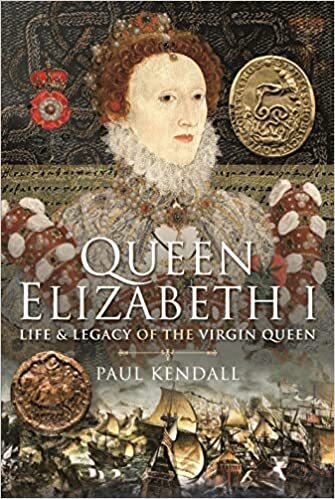
Queen Elizabeth I: Life and Legacy of the Virgin Queen
Hardcover – 30 September 2022 (UK) & 30 November 2022 (US)
In this magnificently illustrated book, we see her birthplace at Greenwich Palace, her childhood homes, her prison in the Tower of London, the palaces she lived in, ruins of stately homes she visited, such as Gorhambury House, Kenilworth House, Upnor Castle and the Elizabethan town walls at Berwick, the many fortifications built during her reign to defend her realm, through to her final resting place in Westminster Abbey.
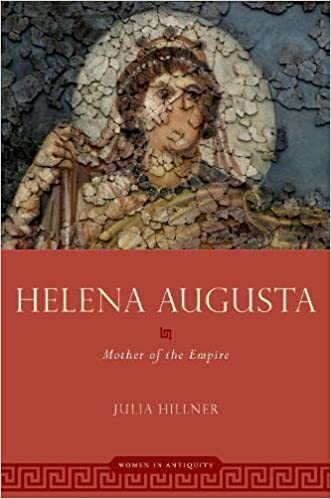
Helena Augusta: Mother of the Empire
Hardcover – 28 October 2022 (US) & 20 November 2022 (UK)
In the middle of the third century, a girl was born on the north-eastern frontier of the Roman empire. Eighty years later, she died as Flavia Iulia Helena, Augusta of the Roman world and mother of the first Christian emperor Constantine, without ever having been married to an emperor herself. In Helena Augusta: Mother of the Empire, Julia Hillner traces Helena’s story through her life’s peaks, which generated beautiful imperial artwork, entertaining legends as well as literary outrage. But Helena Augusta also pays careful attention to the disruptions in Helena’s life course and in her commemoration–disruptions that were created by her nearest male relatives.

Queens: Women in Power through History
Hardcover – 14 October 2022 (UK) & 15 November 2022 (US)
In a world historically dominated by male rulers, the women who have sat on thrones of their own shine out brightly. Some queens and empresses were born to greatness, while others fought their way to power. Queens ranges from the ancient world to the present day, telling the stories of these women who ruled, from murderous former courtesan Wu Zetian in 7th century China to Elizabeth I, the ‘Virgin Queen’ of England.
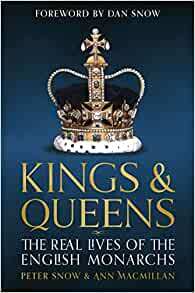
The Kings and Queens of England: Lives and Reigns from the House of Wessex to the House of Windsor
Hardcover – 13 October 2022 (UK) & 15 November 2022 (US)
Opening with the reign of King Alfred, during which the foundations of the nation were laid, The Kings and Queens of England introduces the monarchs who have ruled through personal and political strife, triumph, war and peacetime. Snow and MacMillan offer a unique insight into the waxing and waning fortunes of these formidable rulers, from those such as devious King John, who ruled with cruelty and fabled warrior-king William the Conqueror, to our own Elizabeth II, admired for her diplomacy and integrity while presiding over turbulent times.
[no image yet]
A Companion to the Queenship of Isabel La Católica (Brill’s Companions to the Christian Tradition, 104)
Hardcover – 17 November 2022 (US & UK)
The queenship of the first European Renaissance queen regnant never ceases to fascinate. As fascists to feminists fight over Isabel’s legacy, we ask which recyclings of her image are legitimate or appropriate. Or has this figure taken on a life of her own?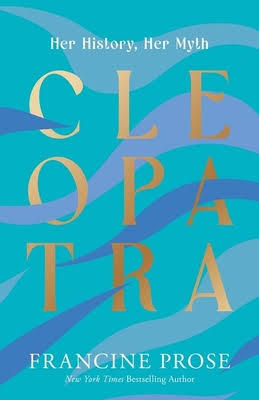
Cleopatra: Her History, Her Myth (Ancient Lives)
Hardcover – 8 November 2022 (US & UK)
Francine Prose delves into ancient Greek and Roman literary sources, as well as modern representations of Cleopatra in art, theatre, and film, to challenge past narratives driven by orientalism and misogyny and offer a new interpretation of Cleopatra’s history through the lens of our current era.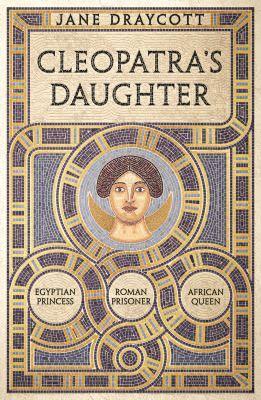
Cleopatra’s Daughter: Egyptian Princess, Roman Prisoner, African Queen
Kindle Edition/Hardcover – 10 November 2022 (UK) & 23 April 2023 (US)
The first biography of one of the most fascinating and unjustly neglected female rulers of the ancient world: Cleopatra Selene. Princess, prisoner, African queen – and surviving daughter of Cleopatra VII.
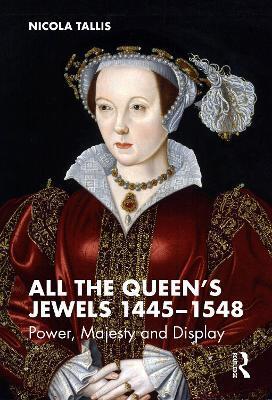
All the Queen’s Jewels, 1445–1548: Power, Majesty and Display
Paperback – 29 November 2022 (US & UK)
The jewellery worn by queens reflected both their gender and their status as the first lady of the realm. Jewels were more than decorative adornments; they were an explicit display of wealth, majesty and authority. They were often given to queens by those who wished to seek her favour or influence and were also associated with key moments in their lifecycle. These included courtship and marriage, successfully negotiating childbirth (and thus providing dynastic continuity), and their elevation to queenly status or coronation. This book explores the way that queens acquired jewels, whether via their predecessor, their own commission or through gift giving. It underscores that jewels were a vital tool that enabled queens to shape their identities as consort and to fashion images of power that could be seen by their households, court and contemporaries.
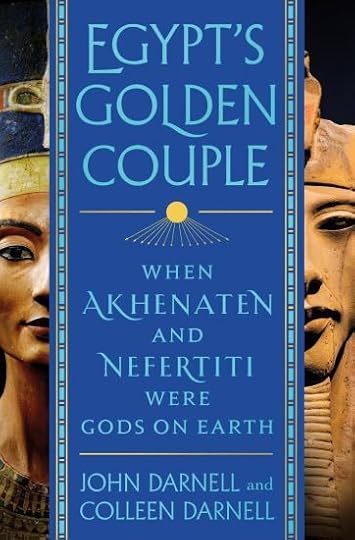
Egypt’s Golden Couple: When Akhenaten and Nefertiti Were Gods on Earth
Hardcover – 1 November 2022 (US) & 9 November 2022 (UK)
November 2022 marks the centennial of the discovery of the tomb of Tutankhamun, and although “King Tut” is a household name, his nine-year rule pales in comparison to the revolutionary reign of his parents. Akhenaten and Nefertiti became gods on earth by transforming Egyptian solar worship, innovating in art and urban design, and merging religion and politics in ways never attempted before.

Medieval Royal Mistresses: Mischievous Women who Slept with Kings and Princes
Hardcover – 30 November 2022 (UK) & 6 February 2023 (US)
Marriage for Medieval kings was about politics, power and the provision of legitimate heirs. Mistresses were about love, lust and possession. It was a world that included kidnap, poison, murder, violation, public shaming and accusations of witchcraft. Ambition and quick wits, as well as beauty, were essential attributes for any royal mistress. Infamy, assassination and imprisonment awaited some royal mistresses who tumbled from favour, whilst others disappeared into obscurity or respectable lives as married women and were quickly forgotten. Meet Nest of Wales, born in turbulent times, whose abduction started a war; Alice Perrers and Jane Shore labelled ‘whores’ and ‘wantons’; Katherine Swynford, who turned the medieval world upside down with a royal happy-ever-after and Rosamund Clifford, who left history and stepped into legend. Discover how serial royal womanisers married off their discarded mistresses to bind their allies close. Explore the semi-official roles of some mistresses; the illegitimate children who became kings; secret marriage ceremonies; Edith Forne Sigulfson and Lady Eleanor Talbot, who sought atonement through religion, as well as the aristocratic women who became the victims of royal lust. Most of the shameful women who shared the beds of medieval kings were silenced, besmirched or consigned to the footnotes of a patriarchal worldview, but they negotiated paths between the private and public spheres of medieval court life-changing history as they went.
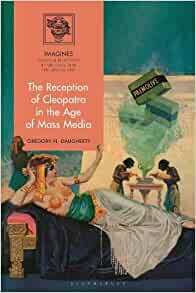
The Reception of Cleopatra in the Age of Mass Media
Hardcover – 3 November 2022 (UK & US)
This study examines the reception of Cleopatra from the beginning of the 20th century to the present day as it has been reflected in popular culture in the United States of America. Daugherty provides a broad overview of the influence of the Egyptian queen by looking at her presence in film, novels, comics, cartoons, TV shows, music, advertising and toys. The aim of the book is to show the different ways in which the figure of Cleopatra was able to reach a large and non-elite audience.
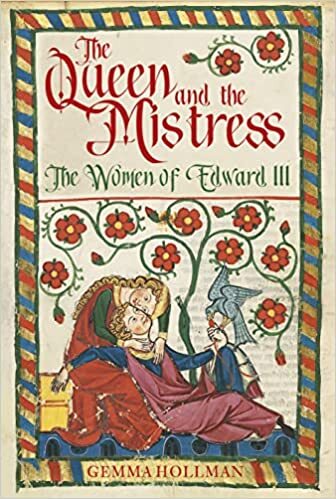
The Queen and the Mistress: The Women of Edward III
Hardcover – 10 November 2022 (UK)
There were two women in Edward III’s life: Philippa of Hainault, his wife of 40 years and bearer of 12 children, and his mistress, Alice Perrers, the 20-year-old who took the king’s fancy as his ageing wife grew sick. After Philippa’s death, Alice began to dominate court, amassing a fortune and persuading the elderly Edward to promote her friends and punish her enemies.
The post Book News November 2022 appeared first on History of Royal Women.
October 20, 2022
Royal Jewels – The Courtauld Thomson Scallop-shell Brooch
The Courtauld Thomson Scallop-shell Brooch was bequeathed to Queen Elizabeth the Queen Mother in 1944 by artist and writer Winifred Hope Thomson as “a mark of respect and profound admiration.” Winifred further expressed the hope that the brooch would “be passed on as a personal possession from Queen to Queen of England.”1 Winifred’s will describes how her brother Sir Courtauld Thomson, later Lord Courtauld Thomson, was involved in the design of the brooch.
The brooch is described as a “scallop shell, entirely pave-set with brilliant and with a single pearl at the centre, suspending five unequal pampilles, or articulated drops, set with square-cut stones ending in pear-shaped pendants.”2
Queen Elizabeth the Mother famously wore the brooch on her 100th birthday.
Embed from Getty ImagesEmbed from Getty ImagesThe brooch remained in the possession of the Queen Mother until her death in 2002 when it was inherited by her daughter Queen Elizabeth II. Queen Elizabeth wore the brooch for the wedding of her granddaughter Zara Phillips to Mike Tindall in 2011.
Embed from Getty ImagesThe post Royal Jewels – The Courtauld Thomson Scallop-shell Brooch appeared first on History of Royal Women.
Netflix releases the trailer for The Crown season 5
The new season is set to premiere on 9 November on Netflix. Watch below:
The post Netflix releases the trailer for The Crown season 5 appeared first on History of Royal Women.
October 18, 2022
Isabella of Valois – The child bride of King Richard II
Isabella of Valois was born on 9 November 1389 in Paris. Her parents were the King and Queen of France, Charles VI and his wife Isabeau of Bavaria. Isabella was the third child to be born to her parents, though her elder siblings both died as infants. A further nine children were born to the couple, including Isabella’s younger brother Charles who succeeded her father as King Charles VII of France.
As a princess of France, Isabella grew up in the public eye, and she was used to the lavish life of the court. However, this does not mean that Isabella had a carefree childhood. Although her father was crowned in 1380, it was not until 1388 that Charles ruled in his own right. Prior to this, his uncles had controlled the country as regents as he had been a child king. This meant that when Charles began his personal rule, he had to try to repair the damage done to France’s finances and suppress widespread revolts. On top of this, France was at war with Burgundy and was in the midst of what would later be known as the Hundred Years War with England. If this was not enough, in 1392, Charles VI of France experienced a traumatic psychotic episode while away on campaign. This was not a one-off, and the King was plagued by periods of severe mental illness for the rest of his life. While Isabella was a young girl, her father often went through stages where he would not even recognise his wife and children. He eventually developed a condition known as Glass Delusion, which led him to believe he could shatter like glass if he was touched. All of these factors meant that Isabella did not have the easiest of starts in life.
 King Charles VI of France (public domain)
King Charles VI of France (public domain)We do not usually hear much of the lives of young princesses in this era, but in 1396 there were many records and artworks which mentioned Isabella of Valois. This was because it was in this year that Charles VI tried to make peace with England and bring an end to the ongoing war by marrying his daughter to the English King. Child marriages were not uncommon during the medieval era, but this was extreme. King Richard II of England was a 29-year-old widower, and Isabella was a mere six years old. However, it must be noted that this marriage was not to be consummated while Isabella was still a child, and King Richard II believed he was still young enough to wait to have children with Isabella when she was of age. A young bride was also seen as a good thing as Richard could raise her at the English court, where she would be influenced by English customs and be “moulded” to how the King would like her to be. All of this sounds very disturbing from our modern point of view but was seen as perfectly acceptable for the period.
Before the wedding, English ambassadors visited Isabella, and the Princess told them that if it pleased God and her father, she was glad to be Queen of England. She then practised the role of Queen while she played, and a sign of her age is that alongside her wedding gowns in her luggage were several dolls and toys.
On 9 March 1396, a proxy wedding took place, and a vast dowry was signed over to England from France. However, it was not until November that the official wedding was carried out in person, where it was said that Isabella wore a gold crown and a blue velvet gown. The girl was said to be tearful on this occasion, and she was carried by her uncles. From this point onwards, Isabella was no longer the responsibility of her parents, and she was to move to England, where she would be raised by a French governess in her own court at Windsor Castle.
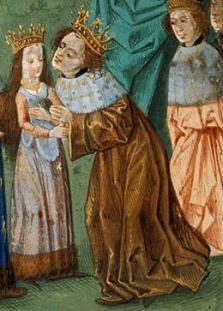 Wedding of Richard and Isabella (public domain)
Wedding of Richard and Isabella (public domain)Isabella was crowned Queen of England in 1397, but she continued to live in her own household. However, the King did visit her regularly, and the pair developed a bond of friendship. Isabella and her maids eagerly awaited his visits as they found him to be funny and kind.
Maybe if Isabella had come of age and the union with Richard had developed, they could have been happily married, but this was not to be. In 1399, Isabella’s uncle Louis I, Duke of Orléans, seized power in France from her unstable father. He did not wish to continue the peace with France, and so he supported a rival and cousin of King Richard called Henry Bolingbroke in his aim to leave France and take control of England. At this time, King Richard was away in Ireland, so it was relatively easy for Henry Bolingbroke to gain the support of much of the English nobility. During this period, Isabella was moved from place to place and was eventually put under house arrest, a terrifying experience for a child.
By August 1399, King Richard II had surrendered to the rebels, he was swiftly imprisoned, and on 13 October, England had a new king as Henry Bolingbroke became King Henry IV of England. In February of the following year, it was announced that Richard the deposed King was dead; it is still unclear how exactly he died. Young and widowed, Isabella was stuck in England while her fate was decided for her. It was wished by the new King that Isabella would marry his son Henry, but the brave ten-year-old apparently refused this and publicly mourned for her dead husband.
In 1401, Isabella finally returned to France, though her dowry was lost to England. In June 1406, she married again, this time to her cousin Charles who became the Duke of Orléans soon after their marriage. On 13 September 1409, Isabella sadly died in childbirth; she was survived by a daughter named Joan, who was her only child. As Isabella had refused to marry Henry IV’s son Henry, her sister Catherine later went on to marry him instead and became Queen of England when he succeeded the throne as Henry V.1
The post Isabella of Valois – The child bride of King Richard II appeared first on History of Royal Women.
October 17, 2022
The Year of Empress Elisabeth – The ultimate fashion victim
When Elisabeth married her first cousin Emperor Franz Joseph of Austria, her trousseau could hardly be considered worthy of her rank. Nevertheless, her trousseau, consisting of 25 trunks, arrived ahead of the bride in Vienna.
Although the jewellery listed was worth at least 100,000 guldens, most of it was gifts from her future husband and mother-in-law. Her wardrobe was estimated at 50,000 guldens, and even in this instance, the most valuable item, a blue velvet cloak with sable trimmings and a sable muff, was a gift from the Emperor. In addition, Elizabeth had four ballgowns (two white, open pink and one blue), 17 Putzkleider (fancy gowns with trains), 14 silk dresses and 19 summer frocks. She also owned three crinolines and four corsets, including three especially for riding.
In addition, she had 12 headdresses and 16 hats. Her underwear was also listed. She had 12 dozen camisoles, three dozen nightgowns, 14 dozen silk stockings, 12 embroidered nightcaps, 24 night neckerchiefs, six dozen petticoats, five dozen pantalettes, 24 combing coats and three bathing shirts.1
Embed from Getty ImagesThe number of shoes was also impressive. She had 113 pairs altogether, but not long after her arrival, new shoes had to be bought as she could only wear a pair of shoes for one day before they were given away. Elisabeth hated giving away her shoes and later abolished the practice. Other objects in her trousseau included fans, umbrellas, combs, hairbrushes, toothbrushes, shoehorns and hairpins.
Embed from Getty ImagesHowever, even the Emperor realised it was not up to the standard for an Empress. He wrote, “With the trousseau, it seems to me things are not moving ahead well, and I have difficulty believing that it will be pretty.”2 He needn’t have worried, as Elisabeth became an almost instant star.
Embed from Getty ImagesElisabeth loved wearing the finest clothes at first. She particularly enjoyed wearing national costumes, such as the Hungarian one. For her much-beloved hikes, she wore a short loden skirt with a simple blouse, loose jacket, woollen socks, hiking boots and a loden hat with a feather.3
As she grew older and her public appearances became rarer, every outing turned into a sensation. When she attended her brother’s wedding in 1864, her brother-in-law wrote to Vienna that Elisabeth “was stunningly beautiful, also the people here acted insane. I have never seen anyone having such an effect before.”4 Not unlike today, her looks were always completely picked apart. Every flaw was a cause of discussion, and Elisabeth did not enjoy the fact that she always caused a sensation. In addition, she had an unhealthy relationship with food, and this intense interest in her physical appearance only made her more obsessed with maintaining her beauty.
The constant dieting and excessive exercise kept her waist at 50 cm (19.5 inches) and her weight at approximately 50 kilos (110 pounds). She often laced so tightly that she suffered from shortness of breath. The lacing frequently took up to an hour, with a total dressing time of up to three hours. This occasionally took place several times a day. This undoubtedly also added to Elisabeth’s desire to avoid public appearances. In 1870, she gave up wearing petticoats and, from then on, only wore thin pantalettes made of doeskin. She also had herself sewn into dresses.5
From the death of her son, Crown Prince Rudolf, Elizabeth wore only mourning clothes. When the official mourning period ended, she gave away all her light-coloured gowns and accessories to her daughters, Gisela and Marie Valerie. On just one occasion – the christening of Marie Valerie’s first child – she wore a pearl grey dress. She also gave away most of her jewellery, including the famous stars. Most pieces went to her daughters and her granddaughter Elisabeth, but she also gave one piece to her sister-in-law Maria Josepha with the words, “It is a remembrance of the time I was alive.”6
The post The Year of Empress Elisabeth – The ultimate fashion victim appeared first on History of Royal Women.
October 16, 2022
Review: Corsage (2022)
*spoilers*
Corsage (2022) is a brand-new film about Empress Elisabeth of Austria. However, rather than focussing on the youth of the Empress as films about her tend to do, we meet Elisabeth shortly before her 40th birthday in 1877.
Elisabeth realises that she is getting old, which only adds to her obsession with controlling the intake of food and her wish to keep her waistline down. Servants desperately work to fit Elisabeth into yet another tight corset as she rudely tells them off. This is an Elisabeth we’re not used to seeing, but this film tells more of the truth than any film has done before. Elisabeth laments the death of her eldest daughter Sophie, who died in infancy, as she stands by the closed-off nursery that is still as it once had been. We meet the adoring Rudolf, who worries about her and her youngest daughter, who is only 9 at the time and to whom Elisabeth speaks only Hungarian. Considering the fact that much of the story is focused on Elisabeth’s age, I was surprised that her daughter Gisela was not included. By 1877, Gisela had made Elisabeth a grandmother twice over. I think this would have added to the story.
The troubled relationship with her husband and son is also prominent in the film, as Elisabeth flees Vienna several times. We meet her cousin King Ludwig II of Bavaria, to whom she confides her wish to die. With a bit of truthful irony, he forbids her to drown in his lake. The two are obsessively close, and they spend time in bed together, although they do not sleep together.
Elisabeth’s ladies-in-waiting reluctantly suffer through Elisabeth’s whims. At one point, Elisabeth cuts off her hair – driving her hairdresser to madness as she had considered her life’s work. One lady-in-waiting is put on a strict diet of orange slices and broth, so she is able to stand in for Elisabeth at certain events. She is even forced to get the same tattoo as Elisabeth. Elisabeth’s doctor prescribes her heroine to manage her nerves and reminds her that she is now at an age where most of her people would be dead. As we move through Elisabeth’s troubled mind, we also deviate from history. Her assassination in 1898 is widely known, but Corsage has Elisabeth commit suicide by jumping from the bow of a ship, finally making her wish come true.
Overall, Corsage is a haunting film about a complicated woman. Its soundtrack is beautiful and goes well with the film. The romanticised myth around Elisabeth is deftly dealt with and puts Romy Schneider’s “Sissi” to bed. There’s a new Elisabeth in town, and it’s Vicky Krieps.
Corsage is set to be released in December 2022 in the UK and the US.
The post Review: Corsage (2022) appeared first on History of Royal Women.
October 15, 2022
Review: The Serpent Queen (2022) – Episode 5
*spoilers*
The episode opens with Rahimina and Catherine walking in the woods. Catherine reveals to her that the letter contains proof of a conspiracy between Mary, Queen of Scots and her cousin Queen Elizabeth I of England against Catherine. Catherine asks Rahima to search Mary’s room for more evidence.
We return to the newly crowned Catherine, who is frustrated with Diane’s disrespect. Henry comes into her room to tell her she was right about the Holy Roman Emperor wanting to test him. He decides to make her regent as he goes off to fight him. Mary, Queen of Scots, a Queen in her own right, strangely curtseys to her father-in-law as he rides off. Diane rides up at the last moment to join Henry.
Catherine’s first privy council goes awry when the others fail to show up for it. She sees the test ahead and plays the game. Meanwhile, on the battlefield, Diane convinces Henry not to ride into battle. Catherine stands before parliament (I wasn’t aware 1500-something France had a parliament?) to passionately plea for more money for Henry’s campaign. Catherine wins the protestants’ support. Henry returns home in one piece and victorious.
The following morning, Henry and Catherine go for a ride as Diane is denied entry to the King’s room. Diane uses more and more of the gold solution provided by Catherine’s servant. Finally, she goes over the daily limit and downs the entire bottle. Henry takes her to Château de Chenonceau, which is now his. They have a heart-to-heart where he asks her if it is too late for them. He also grants her Chenonceau.
One member of the protestant faction rages against the King during an audience as Château de Chenonceau had once been his home. He insults the King and Diane, and Diane slashes his throat when he tries to leave, much to the horror of onlookers. Henry forgives her as the man dies on the floor. Catherine just stares at him.
As Catherine tries to find some peace at Château de Chenonceau, she finds that Diane has taken possession of it. Catherine angrily turns and wonders who will rid her of Diane.
Back in the present, Rahima agrees to search Mary’s chambers. Catherine goes off to walk with Mary to give Rahima time for her search. Catherine sends one of Mary’s ladies to Mary’s room to fetch her a shawl, and she ultimately catches Rahima in the act. Was it a trap all along?
Episode five sees Catherine inching closer to absolute power, but to me, it felt rather slow and also rather dark. So, with just three more episodes to go, will The Serpent Queen reach her goal?
The Serpent Queen is available now on STARZ and Amazon Prime. You can sign up here for Amazon Prime.
The post Review: The Serpent Queen (2022) – Episode 5 appeared first on History of Royal Women.
October 14, 2022
Empress Liu Jin’gui – The miserly Empress
Empress Liu’s story has often been seen as a morality tale. She has been known as a villainous empress who deserved her just deserts when she was forced to commit suicide. She disowned and had her own father flogged, deserted her husband in his final moments, and caused her son’s death. It was not until her final moments that she realized all the harm her evil deeds had done and became remorseful. Empress Liu realized that she was to blame for the downfall of the Later Tang Dynasty. Her love of wealth, pleasure, and power had caused her to hurt all those she loved and forced her to lose everything, including her own life.
Empress Liu was born in Cheng’an in Weizhou Prefecture (modern-day Cheng’an in Shandong Province) around 895 C.E.[1] Her full name was Liu Jin’gui.[2] Her father was originally named Liu Kui, but he was renamed Liu Shanren (which meant “mountain people” [3]) because he sold medicinal herbs from the mountains.[4] Liu Jin’gui was an only child, and her mother was killed during a raid.[5]
In the last years of the declining Tang Dynasty, Prince Li Keyoung attacked Cheng’an when Liu Jin’gui was six years old.[6] During the attack, Liu Jin’gui was abducted and forced to become a servant in Prince Li Keyoung’s household.[7] Liu Jin’gui was a maid to Lady Cao, the second concubine of Prince Li Keyoung.[8] Under Lady Cao’s guidance, Liu Jin’gui was taught to play the reed pipe, dance, and sing.[9] She grew into a very beautiful and desirable young woman.[10]
In 908 C.E., Prince Li Keyoung died. His eldest son, Li Cunxu, became the Prince of Jin. To comfort her grieving son, Lady Cao brought the thirteen-year-old Liu Jin’gui to sing for Prince Li Cunxu.[11] Prince Li Cunxu had desired Liu Jin’gui for a long time and desperately wanted to have her.[12] Not wishing to deprive her son of the girl he wanted, Lady Cao gave Liu Jin’gui to him.[13] She became his concubine. She quickly bore Prince Li Cunxu a son named Li Jiji. Prince Li Cunxu was very happy with his newborn son and believed that Li Jiji looked like him.[14] He spoiled Liu Jin’gui and gave her the title of Lady of Wei.[15] Lady Liu also accompanied Prince Li Cunxu on his military campaigns to overthrow the newly formed Later Liang dynasty (which was formed in 907 C.E.) and become the next Emperor of China.[16]
Liu Shanren heard that his daughter had become a noblewoman. He went to Prince Li Cunxu’s palace to see her. When Lady Liu learned that her father was at the palace to visit her, she was embarrassed because of her father’s lowly origins.[17] She believed that if Prince Li Cunxu learned of her father’s humble background, she would no longer be in his favour.[18] Lady Liu refused to acknowledge her father.[19] She told Prince Li Cunxu that her father had died long ago.[20] She ordered her father to be expelled from the palace and have him flogged.[21] Liu Shanren was tossed out onto the palace gates and was beaten with a cane.[22] Her poor, badly beaten father left the palace gates in tears, and he was heartbroken that his daughter had disowned him.[23] Lady Liu made an important official named Zhang Quanyi her adopted father.[24]
In 923 C.E., Prince Li Cunxu overthrew the Later Liang dynasty and formed his own dynasty known as the Later Tang. He ascended the throne as Emperor Zhuangzong. Emperor Zhuangzong wanted to make Lady Liu his Empress. However, he already had a main wife named Lady Han and a consort named Lady Yi, who was of a higher status than Lady Liu.[25] However, his officials wished to fulfill Emperor Zhuangzong’s desires by agreeing to install Lady Liu as the Empress.[26] Therefore, Lady Liu was invested as Empress.[27] Lady Han and Lady Yi became Emperor Zhuangzong’s concubines.[28]
Empress Liu became the real power behind the throne because Emperor Zhuangzong gradually became lazy after overthrowing the Later Liang dynasty.[29] She promoted her favourite singers and eunuchs.[30] Empress Liu was also a fervent believer in Buddhism and heavily persuaded Emperor Zhuangzong to convert to Buddhism.[31] She corresponded with military officers and accompanied her husband to visit ministers in their mansions.[32] However, Empress Liu was best known for being a miser.[33]
In 925 C.E., Empress Liu refused to pay Emperor Zhaungzong’s soldiers.[34] When the situation became dire, she decided to give the soldiers gifts.[35] One soldier was very critical of her and said, “What’s the use of this when my wife and children have already died of hunger?” [36] It was not long until all the soldiers refused to serve the imperial family.[37]
When an official named Guo Congqian rebelled against the Later Tang Dynasty, Emperor Zhuangzong was struck with an arrow to the chest, and he fell down on the palace’s steps.[38] As he was bleeding, he asked his Empress to come and see him.[39] Empress Liu refused to see him because she was packing her valuables and money so she could flee the capital.[40] Emperor Zhuangzong died, and Empress Liu fled the capital with her brother-in-law named Li Cunwu.[41] They took the most precious gold, silver, and jewellery with them.[42] They fled to the city of Jingyang and became lovers.[43]
Li Siyuan (Emperor Zhuangzong’s adopted son) ascended the throne as Emperor Mingjong. Empress Liu’s son, Prince Jiji, led a failed attempt to gain the throne.[44] Knowing he would die of treason because of his failed rebellion, Prince Jiji hung himself.[45] Her lover, Li Cunwu, was killed by his personal bodyguards. Empress Liu knew that Emperor Mingjong would soon come for her.[46] To save herself, she shaved her head and became a Buddhist nun.[47] Emperor Mingjong sent an imperial edict to Jinyang and ordered Empress Liu to kill herself.[48] This time, Empress Liu recognized all the evil deeds she had done and became remorseful.[49] She realized all the harm she had caused her loved ones. Her last words were: “I gave up my father and departed from my husband. I should answer for my evil. I have wiped out the Li’s imperial power, and I have wiped out my own.” [50] Then, she hung herself. She died in 926 C.E. at the age of thirty-one. Empress Liu was given the posthumous title of Empress Shenminjing.[51]Thus, it was not until the final moments of her life that she realized she had harmed the dynasty that her husband had once created. The Later Tang dynasty did not survive long after her death as it fell eleven years later.
Sources:
Ruizhi, S. (2015).” Empress Liu”. Notable Women of China: Shang Dynasty to the Early Twentieth Century. (B. B. Peterson, Ed Z.Yaolin, trans.). London: Routledge. pp. 235-240.
McMahon, K. (2013). Women Shall Not Rule: Imperial Wives and Concubines in China from Han to Liao. NY: Rowman and Littlefield.
Liu, N. (2014). “Liu, Empress of Emperor Zhuangzong of Later Tang.” Biographical Dictionary of Chinese Women, Volume II: Tang Through Ming 618 – 1644. (L. X. H. Lee, Ed.; A. D. Stefanowska, Ed.; S. Wiles, Ed. J. Eagleton, trans.). NY: Routledge. pp. 259-260.
[1] Liu, 2014
[2] Ruizhi, 2015
[3] Ruizhi, 2015, p. 235
[4] Ruizhi, 2015
[5] Ruizhi, 2015
[6] Liu, 2014
[7] McMahon, 2013
[8] Liu, 2014
[9] Liu, 2014
[10] Liu, 2014
[11] Ruizhi, 2015
[12] Liu, 2014
[13] Liu, 2014
[14] Liu, 2014
[15] Ruizhi, 2015
[16] McMahon, 2013
[17] Liu, 2014
[18] McMahon, 2013
[19] McMahon, 2013
[20] Ruizhi, 2015
[21] McMahon, 2013
[22] McMahon, 2013
[23] Ruizhi, 2015
[24] Liu, 2014
[25] Liu, 2014
[26] Liu, 2014
[27] Liu, 2014
[28] Liu, 2014
[29] Liu, 2014
[30] Liu, 2014
[31] Liu, 2014
[32] Liu, 2014
[33] Liu, 2014
[34] Liu, 2014
[35] Liu, 2014
[36] Liu, 2014, p 260
[37] Liu, 2014
[38] Liu, 2014
[39] Ruizhi, 2015
[40] Ruizhi, 2015
[41] Ruizhi, 2015
[42] Ruizhi, 2015
[43] Ruizhi, 2015
[44] Ruizhi, 2015
[45] Ruizhi, 2015
[46] Ruizhi, 2015
[47] Liu, 2014
[48] McMahon, 2013
[49] Ruizhi, 2015
[50] Ruizhi, 2015, p. 240
[51] Liu, 2014
The post Empress Liu Jin’gui – The miserly Empress appeared first on History of Royal Women.
Review: The century of Juliana, a Queen and her Ideals exhibition
On the eve of the 75th anniversary of the start of Queen Juliana’s reign and inauguration, the Nieuwe Kerk – where her inauguration took place – is hosting a major exhibition about her life. It’s fittingly called The century of Juliana, a Queen and her Ideals. Queen Juliana, or Princess Juliana as she was known after her abdication in 1980, lived to be 94 years old.
The exhibition contains over 400 objects and 200 photographs, from personal possessions to historical documents and evening gowns. Queen Juliana wanted to be a different monarch and objected to being called “Your Majesty”, preferring the more informal “Ma’am.” She was born in 1909 as the only surviving child of Queen Wilhelmina of the Netherlands and Prince Henry, born of Mecklenburg-Schwerin. She grew up in tumultuous times, living through both World Wars and became Queen upon her mother’s abdication in 1948.
Upon entering, one is immediately greeted by Queen Juliana, in the exact spot where her inauguration took place, wearing the exact same clothes. Immediately to the left is the exact carriage that she arrived in.
Click to view slideshow.After the grand entrance, we go through Juliana’s youth and the years during which she grew up. Large digital “newspapers” show us what those years were like as Juliana’s youth passes us by on the other side.
Click to view slideshow.The young woman grows into herself and becomes a bride and a mother just as the Second World War looms.
Click to view slideshow.She would become the Queen of reconstruction after she accended the throne after the Second World War in 1948. She became a one-of-a-kind Queen who wanted to be close to the people, even though she realised all too well that she would never be one of them. The exhibition touches briefly on the independence of Indonesia in 1949, which Juliana supported. There’s a special gold belt that was gifted to Juliana during her state visit to Indonesia in 1971 and a portrait done by Indonesian artist Raden Basoeki Abdullah.
Click to view slideshow.Juliana wanted to be ordinary, but she managed very well to also be extraordinary. From wearing cat-eye glasses that soon became the fashion and riding a bicycle to slipping on an evening gown and wearing magnificent jewels. Although jewellery does not have a great presence at the exhibition, a state banquet shines in all its glory.
Click to view slideshow.One particular eye-catcher is the unique Rolls-Royce that Queen Juliana ordered specifically for the State Visit by Queen Elizabeth II in 1958. It was later also used during the wedding of the future King Willem-Alexander and Queen Máxima.
 Photo by Moniek Bloks
Photo by Moniek BloksQueen Juliana, by then Princess Juliana, and her husband Prince Bernhard gave a revealing interview in 1987 when they celebrated their 50th wedding anniversary. The exhibition has reconstructed the room where the interview took place, down to the paintings of Queen Anna Pavlovna and King William II on the wall, and the original interview plays on a screen. It’s a heartwarming interview during which Juliana jokingly asks her husband where he got the “idiotic” idea to marry her.
 Photo by Moniek Bloks
Photo by Moniek BloksQueen Juliana abdicated in 1980 in favour of her eldest daughter. The last room, turned into the cinema room with the same seats used by Queen Juliana and Prince Bernhard, also covers the abdication and includes the dress she was wearing.
Click to view slideshow.The exhibition comes with an audio tour, which more extensively covers the Lockheed affair and the Greet Hofmans affair. Unfortunately, I did not use an audio tour, so I cannot comment if it significantly adds to the exhibition. However, I did not see much about the affairs in the exhibition itself. Overall, it’s a lovely exhibition that truly brings to life an extraordinary woman who wanted to be ordinary so bad. I particularly loved the items from her youth and the modern painting where she emerges from her own crowned head. Some of the exhibition was a little dark and difficult to see, although this could have been because they were still putting the finishing touches on it. Some of the glass cases also had lots of reflections, making it difficult to enjoy them.
The information is also readily available in English, making it easy for tourists to understand. But unfortunately, the publication “De Eeuw van Juliana” is only available in Dutch.
The century of Juliana, a Queen and her Ideals exhibition will run from 15 October 2022 until 10 April 2023. You can plan your visit here. The Nieuwe Kerk is located next to the Royal Palace in Amsterdam, and it is thus relatively easy to combine your visit.
The post Review: The century of Juliana, a Queen and her Ideals exhibition appeared first on History of Royal Women.
Marie Antoinette (2022) Trailer
The new Marie Antoinette series is shortly going to premiere on Canal Plus. Although no other release dates or streaming services have been announced, it has been commissioned by the BBC.
Take a look at the trailer below:
The post Marie Antoinette (2022) Trailer appeared first on History of Royal Women.



